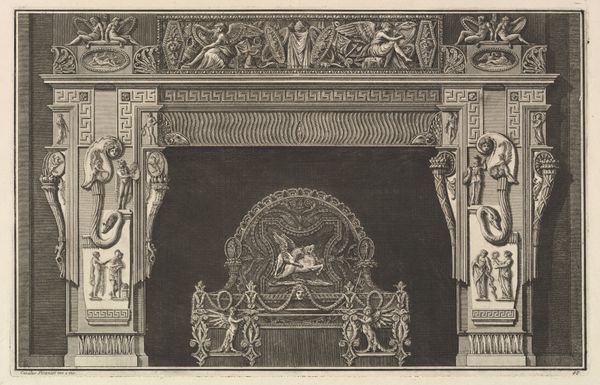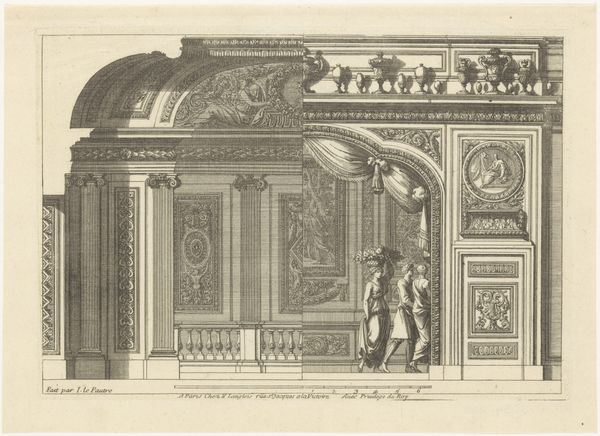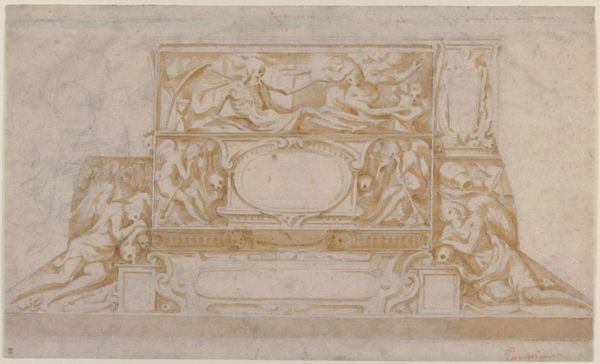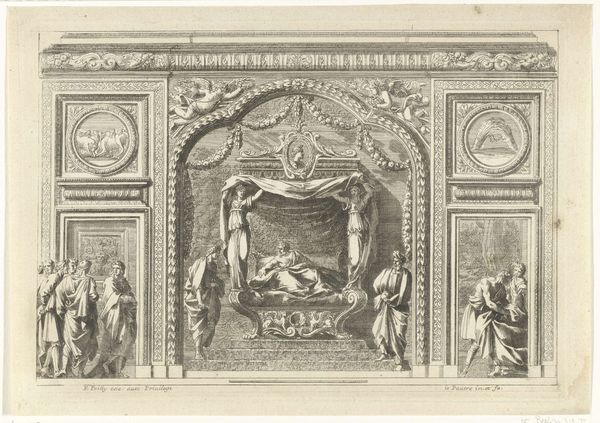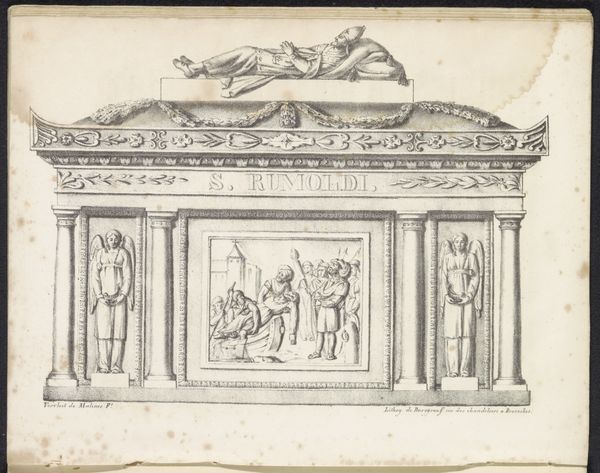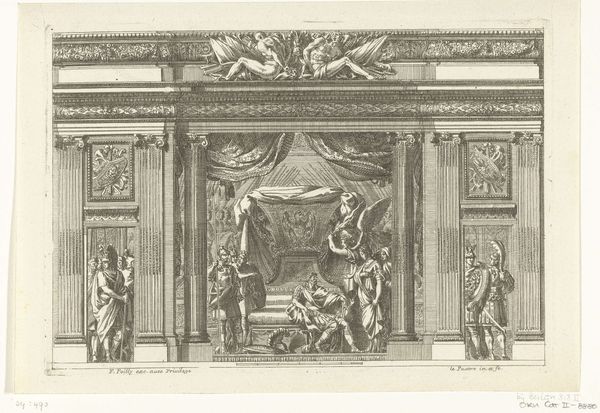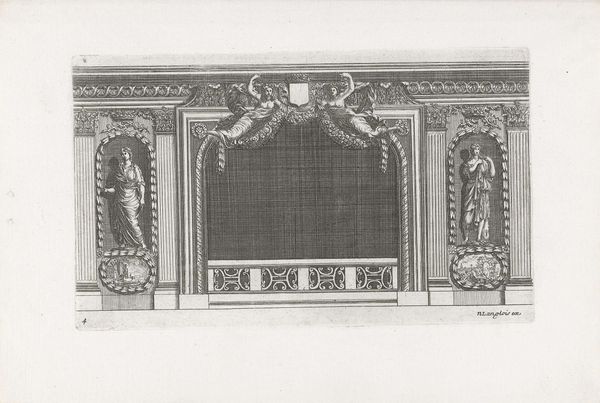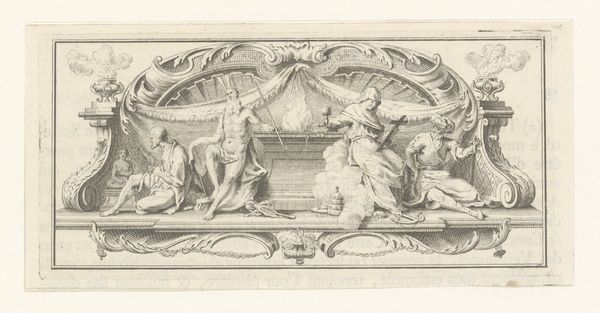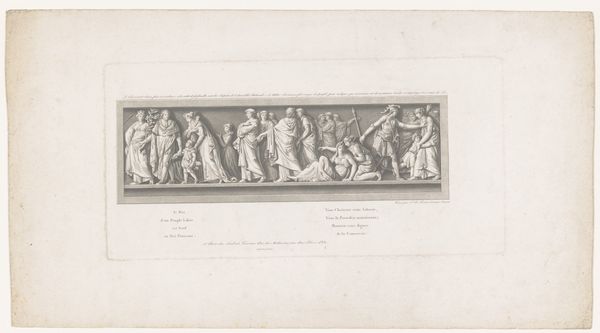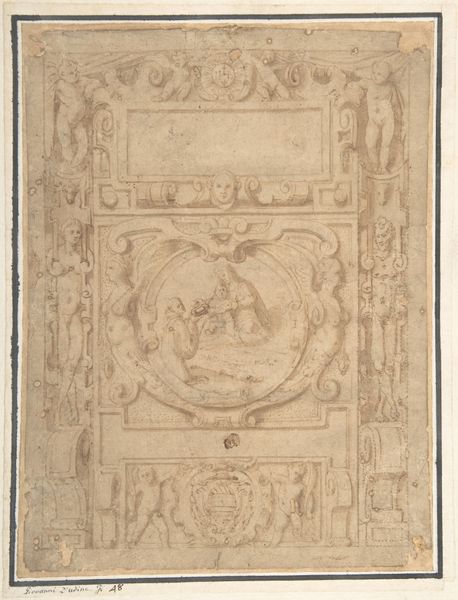
drawing, print, architecture
#
drawing
#
neoclacissism
# print
#
geometric
#
history-painting
#
architecture
Dimensions: sheet: 7 1/2 x 9 1/4 in. (19 x 23.5 cm)
Copyright: Public Domain
Curator: This is a study titled "Detail of Ceiling, Palazzo Massimi" created between 1745 and 1760 by Sir William Chambers. It's a print depicting the architecture within the Palazzo Massimi in Rome. Editor: Immediately, I’m struck by the controlled precision. It's like looking at an exploded diagram—a meticulously planned layout pregnant with imperial ambition, a statement about how social life *should* be ordered from above. Curator: Absolutely. Chambers, deeply invested in Neoclassicism, employed strict geometric forms and historical themes. Notice the rectangular panels, their careful floral ornamentation—hallmarks of architectural design meant to convey reason and order. Editor: And that central panel depicting figures engaged in what appears to be a historical scene. There’s almost a theatrical element—the prostrate figure in the foreground practically begging for acknowledgement. Who were these spaces for, and whose stories did they privilege? Curator: These spaces were designed for powerful families, Roman elites eager to connect themselves to the glory of antiquity. The depicted scene, perhaps alluding to a Roman emperor, served as a reminder of historical precedent and moral authority. Architecture like this wasn’t just functional—it was performative. Editor: Performance, yes, with rigid gender and class lines built in. That detail of the acanthus scrolls framing one section suggests a return to a pre-modern vocabulary and an era of aristocratic excess to legitimize and even aggrandize an existing, hierarchical power structure. The past is rarely just the past. Curator: Quite right. Consider, though, that images—even architectural ones—operate on multiple levels. Beyond the overt messages of power, we encounter enduring symbols of continuity, where certain forms recur and reverberate throughout history. We could see the geometry here in connection to symbolic representations of balance or even cosmic order. Editor: A cosmic order designed by and for the powerful. Looking closely at Chambers’ work allows us to appreciate the degree to which supposedly universal visual vocabularies are actually working to naturalize specific historical and social relationships. The Palazzo becomes more than just a pretty picture. It is a lesson in power. Curator: I think you're spot on; these historical architectural renderings invite us to analyze both what society projects itself to be, but equally so what continuities—for better or worse—emerge in those self-images across time. Editor: And, in this case, those echoes persist today, revealing not just our aesthetic lineage, but also the persistent patterns of power we must confront.
Comments
No comments
Be the first to comment and join the conversation on the ultimate creative platform.

